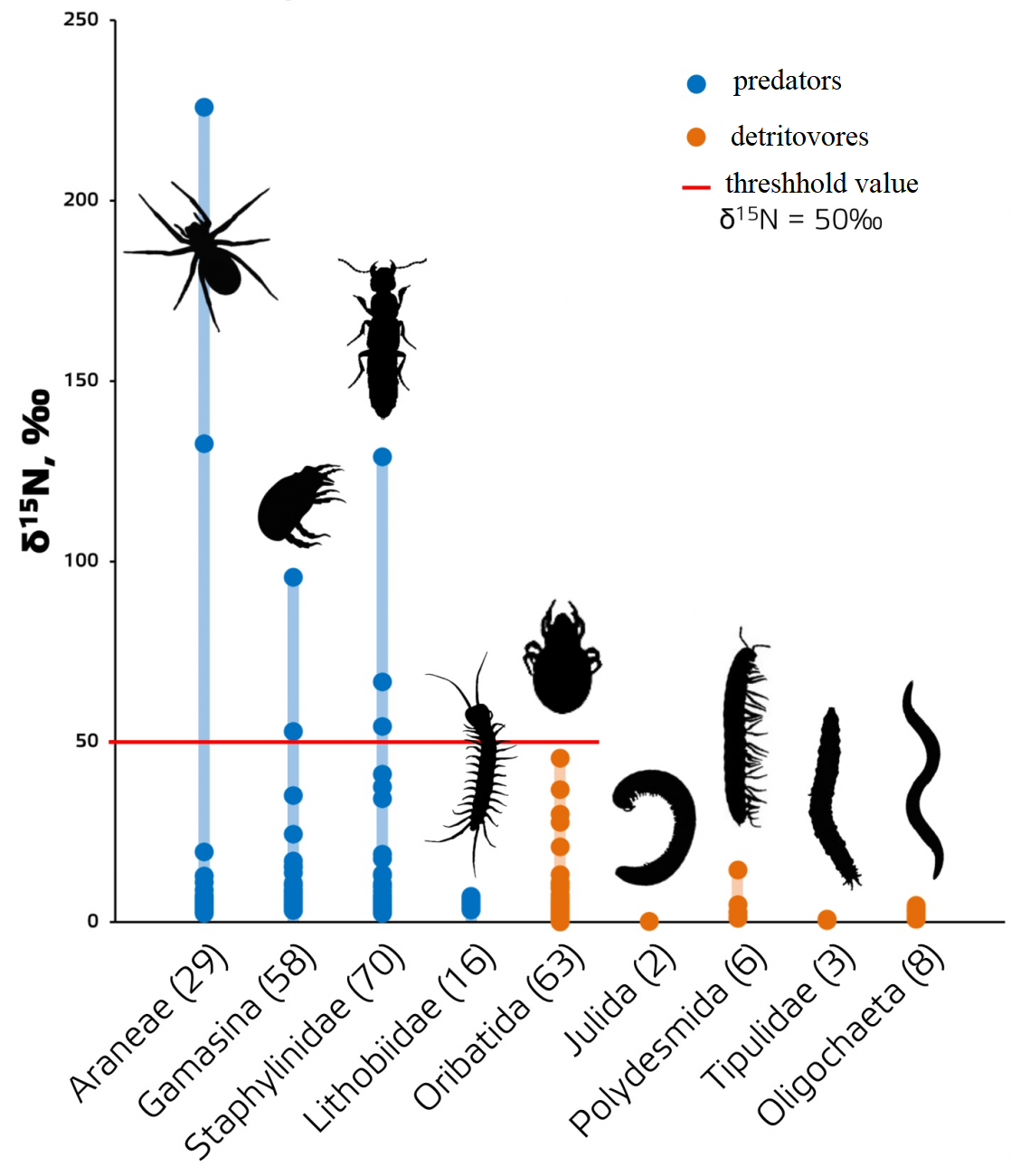
Ixodid ticks (Ixodidae) are well-known blood-sucking parasites that transmit dangerous diseases, including tick-borne encephalitis and Lyme disease. The situation is aggravated by the fact that due to climate change, both the bloodsuckers themselves and the infections they carry are spreading to new territories. Therefore, it is extremely important to know in detail the ecological relationships and natural enemies of ixodid ticks.
The tick Ixodes ricinus changes three hosts during its life, but it spends the main part of its life on the forest floor. There, ticks digest the blood they drink, grow, develop, molt, and also lay eggs. Little is known about the relationships of ticks with other soil and litter animals, including predators. It can be assumed that predators that lie in wait for the larvae and nymphs of ixodid ticks in the soil and litter can significantly influence their numbers.
To find out which soil animals can eat the nymphs of the tick Ixodes ricinus, specialists from the A.N. Severtsov Institute of Ecology and Evolution RAS and M.P. Chumakov FNTsIRIP RAS (Polio Institute) used an isotope label. A technique for tagging ticks using the stable heavy nitrogen isotope 15N was developed specifically for this study. Marked nymphs were placed in experimental microcosms containing leaf litter inhabited by a variety of soil and litter invertebrates. After 8 days of incubation, animals were removed from microcosms and subjected to isotope analysis. High levels of 15N in animal tissues indicated consumption of isotope-labeled tick nymphs.
The isotope trace was found in two species of spiders, two species of gamasid predatory mites, and one species of rove beetles. All these animals are predators with a wide range of diets.
This work is the first step in larger experimental studies that will help identify the full range of invertebrate predators that can control Ixodid tick numbers in soil. The ultimate practical goal of such research is the search for natural mechanisms to combat ectoparasites dangerous to humans.
The work was carried out with financial support from the Russian Science Foundation (project No. 22-14-00363).
The results of the work were published in the Journal of Medical Entomology. Dmitry D. Vinogradov, Alexander S. Smagin, Oxana A. Belova, Sergey M. Tsurikov, Galina G. Karganova, Alexei V. Tiunov. Identification of soil-dwelling predators of tick nymphs (Acari: Ixodidae) by stable isotope labeling. Journal of Medical Entomology, Volume 61, Issue 2, March 2024, Pages 512–516, https://doi.org/10.1093/jme/tjad160
